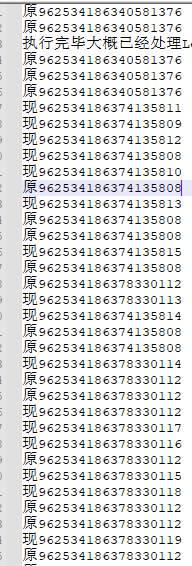前言
最近发现项目里一直存在的概率性bug,最后是发现就是在多线程下就会出现id重复的状况,我自己原本的生成工具类,废了,经过朋友指导我才知道 雪花算法
代码:
1
2
3
4
5
6
7
8
9
10
11
12
13
14
15
16
17
18
19
20
21
22
23
24
25
26
27
28
29
30
31
32
33
34
35
36
37
38
39
40
41
42
43
44
45
46
47
48
49
50
51
52
53
54
55
56
57
58
59
60
61
62
63
64
65
66
67
68
69
70
71
72
73
74
75
76
77
78
79
80
81
82
83
84
85
86
87
88
89
90
91
92
93
94
95
96
97
98
99
100
101
102
103
104
105
106
107
108
109
110
111
112
113
114
115
116
117
118
119
120
121
|
public class SnowflakeIdUtil {
private final long twepoch = 1420041600000L;
private final long workerIdBits = 5L;
private final long datacenterIdBits = 5L;
private final long maxWorkerId = -1L ^ (-1L << workerIdBits);
private final long maxDatacenterId = -1L ^ (-1L << datacenterIdBits);
private final long sequenceBits = 12L;
private final long workerIdShift = sequenceBits;
private final long datacenterIdShift = sequenceBits + workerIdBits;
private final long timestampLeftShift = sequenceBits + workerIdBits + datacenterIdBits;
private final long sequenceMask = -1L ^ (-1L << sequenceBits);
private long workerId;
private long datacenterId;
private long sequence = 0L;
private long lastTimestamp = -1L;
private static SnowflakeIdUtil idWorker;
public static long getSnowflakeId() {
if(idWorker == null) {
synchronized (SnowflakeIdUtil.class) {
if(idWorker == null) {
idWorker = new SnowflakeIdUtil(0, 0);
}
}
}
return idWorker.nextId();
}
private SnowflakeIdUtil() {
}
private SnowflakeIdUtil(long workerId, long datacenterId) {
if (workerId > maxWorkerId || workerId < 0) {
throw new IllegalArgumentException(String.format("worker Id can't be greater than %d or less than 0", maxWorkerId));
}
if (datacenterId > maxDatacenterId || datacenterId < 0) {
throw new IllegalArgumentException(String.format("datacenter Id can't be greater than %d or less than 0", maxDatacenterId));
}
this.workerId = workerId;
this.datacenterId = datacenterId;
}
protected long tilNextMillis(long lastTimestamp) {
long timestamp = timeGen();
while (timestamp <= lastTimestamp) {
timestamp = timeGen();
}
return timestamp;
}
protected long timeGen() {
return System.currentTimeMillis();
}
protected synchronized long nextId() {
long timestamp = timeGen();
if (timestamp < lastTimestamp) {
throw new RuntimeException(
String.format("Clock moved backwards. Refusing to generate id for %d milliseconds", lastTimestamp - timestamp));
}
if (lastTimestamp == timestamp) {
sequence = (sequence + 1) & sequenceMask;
if (sequence == 0) {
timestamp = tilNextMillis(lastTimestamp);
}
}
else {
sequence = 0L;
}
lastTimestamp = timestamp;
return ((timestamp - twepoch) << timestampLeftShift)
| (datacenterId << datacenterIdShift)
| (workerId << workerIdShift)
| sequence;
}
public static void main(String[] args) {
long snowflakeId = getSnowflakeId();
System.out.println(snowflakeId);
}
}
|
结果集:


